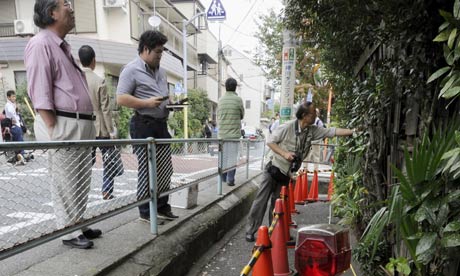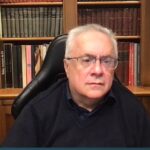Por Marcos Tavares
Descobriram ontem que a contaminação radioativa numa parte de Tóquio excede a de partes dentro da zona de exclusão de Fukushima.
Suspeito que isso se deva à inacreditável política do governo japonês de incinerar os destroços das zonas afetadas pelo tsunami (lixo radioativo, portanto). Irão espalhar radioatividade para áreas que foram pouco afetadas, os gênios.
O R7 tenta amenizar a notícia, trocando “contaminação radioativa” e “riscos devidos à contaminação” por “medo da radiação”. É a velha “radiofobia” ressuscitada.
Do The Guardian
Fukushima radiation fear in Tokyo after danger reading
Radiation level on Tokyo street was 17 times recommended limit, exceeding readings in parts of Fukushima exclusion zone

The cordoned off area of a Tokyo street where the high radiation reading was found. Photograph: AP/Kyodo News
Concerns that contamination from the Fukushima Daiichi plant has spread over a wider area than at first thought have deepened after elevated levels of radiation were found in Tokyo and other areas far from the facility.
Researchers recorded radiation of 3.35 microsieverts per hour along a street in Setagaya ward, a higher level than in some parts of the 20-kilometre exclusion zone around the nuclear plant.
The mayor of Setagaya, Nobuto Hosaka, suggested that the source of the contamination had been traced to bottles found beneath the floor of a nearby house. Experts were examining the contents of the bottle, Kyodo News said.
The hourly reading is equivalent to 17.6 millisieverts (mSv) a year, according to science ministry calculations, just below the 20 mSv a year required to trigger an evacuation, and more than 17 times the internationally recommended level for the general public.
Officials said the area had been cordoned off, adding that the contamination levels did not pose a threat to health.
The reading in Tokyo was taken a metre above the ground near a hedge, according to the public broadcaster NHK. Other spots along the same street showed lower readings.
The discovery of elevated levels of radiation has added to concerns that fallout from the accident may have spread to the capital, 140 miles from the plant, and beyond.
Kyodo News reported that a citizens’ group detected levels as high as 5.82 microsieverts an hour in a park in the town of Funabashi, Chiba prefecture, 130 miles from Fukushima.
Earlier this week officials in Yokohama, just south of Tokyo, said they had found abnormally high levels of strontium-90 in sediment on the roof of a block of flats. The radioactive isotope, which has a half-life of 29 years, can accumulate in the bones and cause bone cancer and leukaemia.
The task of identifying how far radiation has spread, and in what quantities, is proving difficult. Wind direction and topology can cause radiation to spread unevenly, and particles are more likely to gather in ditches and other places that accumulate dust and rainwater.
The levels recorded in Tokyo are higher than the 2.17 microsieverts an hour currently found in Iitate, a village 30 miles north-west of the stricken plant, from which almost all of the 6,000 residents have been evacuated.
Setagaya ward officials said they had yet to determine the source of the contamination, adding that they would screen more than 250 other locations in the area over the next month.
Radiation levels in the neighbourhood, which has a population of more than 840,000, have not dropped, despite decontamination efforts.
Children have been warned to avoid the recently discovered hotspot, now blocked off by several plastic cones, on their way to and from school.
“I thought the reading must have been a mistake when I first saw it,” Hosaka told the broadcaster TBS. “Once we have confirmed the readings as high, we will push ahead with decontamination efforts.”
Do R7
Testes detectam focos de radiação alta em Tóquio
Medo da radiação se tornou uma das maiores preocupações após terremoto em março
Pequenos focos de radiação foram detectados em Tóquio e em áreas próximas à capital japonesa durante testes para verificar como a contaminação provocada pelo acidente na usina nuclear de Fukushima se espalhou por mais de 200 km do local.
Os níveis de radiação em uma das áreas ficou pouco abaixo do limite a partir do qual se recomenda a retirada dos moradores da região, e mais alto em áreas dentro da zona de exclusão no entorno da usina.
O medo da radiação se tornou uma das maiores preocupações dos japoneses após o terremoto e o tsunami de março deste ano no nordeste do país, que danificaram a usina de Fukushima e provocaram o vazamento de radiação.
Você pode fazer o Jornal GGN ser cada vez melhor.
Apoie e faça parte desta caminhada para que ele se torne um veículo cada vez mais respeitado e forte.



 produtos
produtos



